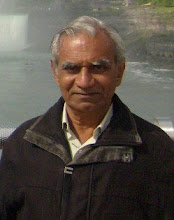SO NEAR, YET SO FAR, THE ANDAMAN ISLANDS. THE CELLULAR JAIL
If we
are asked to draw the outline of our country, we take care to indicate the
narrow strip of land that connects the North Eastern states of our country to
the main land, but conveniently forget to show the poor islands in the Bay of
Bengal,which are also a part of our Nation. They are the Andaman-Nicobar
Islands, situated at about 1200 km East of Chennai andan equal distance
Southward from Kolkata. While the Nicobar Islands are not accessible to the
public due to defence installations, a number of tourists from the main land
and some foreign countries visit the island of Andamans throughouthe year. A
number of good hotels have come up in Port Blair to attract the tourists.
I had
such an occasion on 8th November 2016. I remember the date so well
because it was on that night that our Prime Minister Modi announced the
demonetization of the high-value currency notes, which almost spoiled my much
awaited tour of the Island. How I overcame the problem is irrelevant here in
this article.
In
this travelogue, I will restrict to my visit to the infamous Cellular Jail in Port
Blair. The Cellular Jail was so named because here the convicts were confined
in single cells in utter solitude, with no way of communicating with any
co-prisoners. Now, it has become a National Memorial. As you know, this jail is
known in Hindi as Kala Pani, meaning
black water or Kala’s (Yama, the God of Death) water. Metaphorically, the term,
“kala pani” refers to “being completely stripped of caste, community and creed”
– literally, parting the prisoners from their very souls.. Once anyone came
here as a captive, there was little hope of his escaping torture. Often, they die
on the gallows.
The cells were a part of a
three storeyed structure. Originally, there were seven arms jutting out of a
central tower. This tower helped the guards to keep a watch on the movements of
the prisoners. A large bell was seen
in the tower to raise an alarm. A retrievable bridge connected the seven arms
to the central tower. At night, the bridges were drawn back to isolate the
jail, making it impossible for the inmates to escape. The cells opened from a long
corridor. Inside the cell, the floor was very rough and the walls were not
plastered. I was told that there were a total of 693 such cells. Each cell measured 15 ft by 9 ft and a
height of about 11 ft. There was a ventilator at a height of about 10
feet. No prisoner could reach the ventilator by jumping. Again, the view from the cell, through
the grilled door, was only the rear wall of the next row of cells. This was
done to deny any sort of communication between the prisoners, even by gestures.
The barred cell doors along the colonnaded corridors were bolted through a
niche next to the cell. A lock is used on the bolt jutting out of this wall.
Thus, the lock was kept beyond the reach of the prisoner.
We could see the very cell
where Shri Vinayak Savarkar was kept as a prisoner. I was told that the
Savarkar brothers were not aware of the presence of each other in the same jail
although they were there for more than two years. There were life-size statues
of the prisoners doing hard work like extraction of oil from the seeds by
operating a chakki where they were
toiling like the bulls, and separation of the soft yarn from the fibres of
coconuts by beating continuously on them. Even at work, these prisoners were
kept chained. Each prisoner was given two earthen pots, one to store drinking
water and the other for urinating. There were fixed times when they would be
allowed to go to the toilet. There were life-size statues of how a prisoner was
flogged on his bare body, with his hands tied above his head. We also witnessed
the gallows where the prisoners were hanged, three at a time, by operating a
lever and the basement where the dead bodies fell down. Every prisoner had to
do a fixed amount of work, If a prisoner could not complete the work, he was
flogged. Some were force-fed, resulting in food entering the lungs, causing
their death.
At the end of our visit, we
could attend the light and sound show at the site, which described about the
idea to construct the jail by the British in 1906 and the horrible torture the
convicts experienced. It was after Mahatma Gandhi and Rabindra Nath Tagore
insisted, the British Government finally set the prisoners free and the
cellular jail became just a National Monument. No one comes out of this grave
monument without tears in their eyes. We learnt from our guide that three of
the wings were demolished to build a first-grade hospital for the public.
Treatments are free here.
This visit to the Cellular
Jail was nothing less than a pilgrimage for me, a way to pay respect to the
brave souls who fought for our country and bore the atrocious treatments meted
out to them by the British. This visit was also
quite disturbing for me – it made my heart weep for those inmates whose
crime was basically to rise up for their own rights in their own country. It
made me proud, at the same time angry.
__K R Krishnamoorthy

No comments:
Post a Comment